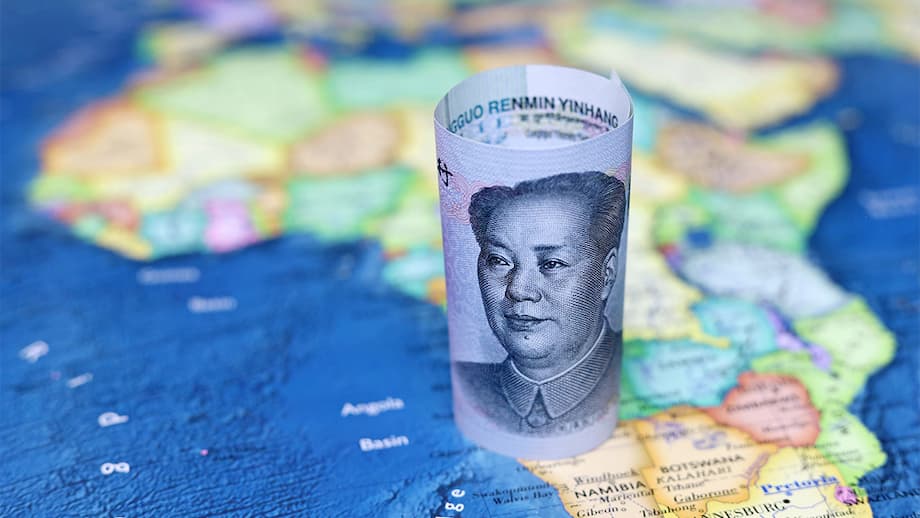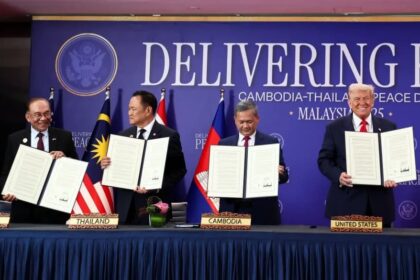China’s Export Boom to Africa: A New Era in Global Trade
In 2025, Africa has emerged as the world’s fastest-growing destination for Chinese exports, outpacing all other major markets and signaling a profound shift in global trade dynamics. As the United States and China remain locked in a protracted tariff war, Beijing’s pivot to Africa is not only reshaping the continent’s economic landscape but also redefining China’s role as a global trade powerhouse. This article explores the drivers behind this export surge, the policies fueling it, and the broader implications for Africa, China, and the world.
- China’s Export Boom to Africa: A New Era in Global Trade
- Why Are Chinese Exports to Africa Surging?
- How Tariffs and Trade Policy Are Redrawing the Map
- Infrastructure, Investment, and the Belt and Road Initiative
- Trade Balance, Currency Swaps, and Financial Integration
- Winners, Losers, and the Risk of Dependency
- How Africa Is Responding: Opportunity and Caution
- Broader Implications: Geopolitics, Global Supply Chains, and the Future
- In Summary
Why Are Chinese Exports to Africa Surging?
China’s exports to Africa have soared by 25% year-on-year, reaching $122 billion in the first half of 2025—already surpassing the total for all of 2020. Projections suggest that for the first time, Chinese exports to Africa could exceed $200 billion by year’s end. This growth dwarfs export increases to other regions and comes as shipments to the United States slump due to ongoing trade tensions and steep tariffs imposed by the Trump administration.
Several factors are driving this boom:
- US-China Trade War: The imposition of tariffs as high as 145% on Chinese goods by the US has forced Chinese manufacturers to seek alternative markets. Africa, with its 1.5 billion people and growing infrastructure needs, has become a prime target.
- Weaker Yuan: The depreciation of China’s currency has made its goods more affordable for African buyers, boosting competitiveness.
- Belt and Road Initiative (BRI): Since its launch in 2013, the BRI has funneled Chinese investment into African infrastructure, creating demand for machinery, vehicles, and construction materials.
- Policy Shifts: China’s removal of tariffs on African imports and expanded market access have deepened bilateral trade ties.
According to Visual Capitalist, Africa saw the largest year-over-year increase in Chinese exports among all regions in the first half of 2025, with a 21.4% jump to $103 billion. In contrast, exports to the US fell by 10.7%.
How Tariffs and Trade Policy Are Redrawing the Map
The ongoing US-China trade war has not only reduced direct Chinese exports to the US but also prompted a global rerouting of supply chains. Some goods destined for American markets are now being transshipped through third countries, including African nations, to circumvent tariffs. However, the most significant shift is the strategic deepening of China-Africa trade relations.
China’s Zero-Tariff Policy: Opening the Door for African Exports
In June 2025, China announced it would remove all tariffs on imports from the 53 African countries with which it has diplomatic relations. This move, reported by Reuters and BBC, extends duty-free access beyond the least developed countries to include middle-income nations like South Africa, Nigeria, Egypt, and Kenya. The policy is designed to balance the trade relationship, which has historically favored China, and to encourage more African value-added products to enter the Chinese market.
China’s Ministry of Commerce reported that imports from African least developed countries reached $21.42 billion by March 2025, a 15.2% increase from the previous year. Products such as dried anchovies from Kenya, lamb from Madagascar, and rubber from Côte d’Ivoire are now reaching Chinese consumers more easily, while African companies like Rwanda’s Fisher Global are scaling up exports of specialty goods like dried chili peppers.
Experts and African officials have praised the policy for supporting industrialization and giving African producers easier access to the world’s second-largest economy. As one Rwandan exporter put it:
“With China’s zero-tariff policy, we can now plan for long-term growth, invest in quality, and reach a market of over a billion consumers.”
China is also negotiating economic partnership agreements, building green channels for agricultural products, and supporting African participation in major trade expos, further integrating African economies into global value chains.
Infrastructure, Investment, and the Belt and Road Initiative
China’s export surge to Africa is closely tied to its massive infrastructure investments under the Belt and Road Initiative. In the first half of 2025 alone, African countries signed $30.5 billion in construction contracts with Chinese firms—five times more than the same period last year. These deals cover everything from railways and ports to industrial parks and energy projects.
Major African economies such as Nigeria, South Africa, and Egypt are leading buyers of Chinese products, particularly construction machinery, vehicles, steel, and electrical equipment. For example, exports of construction machinery to Africa jumped 63% year-on-year, while shipments of passenger cars more than doubled. Steel and iron components used in infrastructure projects rose by 43%, and sales of batteries and transformers also saw double-digit growth.
Chinese state-owned banks are providing the financial muscle behind these projects. The China Development Bank recently released a €245 million tranche for a Nigerian railway and extended loans for infrastructure in Egypt. These investments not only fuel demand for Chinese exports but also help address Africa’s chronic infrastructure gaps, such as unreliable electricity and costly logistics.
Energy and Green Technology: A New Frontier
Energy remains a critical bottleneck for Africa’s development, with less than half the population having reliable access to electricity. China is increasingly exporting solar panels, wind turbines, and electric vehicles to help African countries diversify their energy sources and reduce dependence on imported oil. The affordability of Chinese green technology is a major draw, especially as prices for many Chinese goods shipped to Africa have actually fallen despite rising demand.
For instance, the price of transformers and converters—essential for integrating renewable energy into local grids—dropped by 39% in the January-July 2025 period. This makes it easier for African nations to pursue energy independence and economic growth.
Trade Balance, Currency Swaps, and Financial Integration
Despite the surge in exports, the China-Africa trade relationship remains lopsided. China runs a significant trade surplus with Africa, which reached $62 billion last year. Most African exports to China are raw materials—oil from Angola, cobalt from the Democratic Republic of Congo, and minerals from South Africa—while Chinese exports are dominated by manufactured goods.
To address financial imbalances and reduce reliance on the US dollar, several African countries have entered into bilateral currency swaps with China. Nigeria, South Africa, Egypt, and Mauritius already have such agreements, and Kenya is in talks to convert some dollar-denominated loans to yuan. This could help ease debt burdens and promote the use of the yuan in African financial systems, further deepening economic ties.
Winners, Losers, and the Risk of Dependency
China’s export boom to Africa offers clear benefits: affordable goods, infrastructure development, and new opportunities for African exporters. However, it also carries risks. The influx of cheap Chinese products could crowd out local manufacturers, stifle homegrown industries, and deepen debt dependency if not managed carefully.
Some African policymakers and analysts warn that unless African exports to China grow at a similar pace, trade deficits will widen and economic vulnerabilities will increase. As Hannah Ryder, an Africa-focused consultant, noted:
“Unless we have an equivalent increase of African exports to China, then trade deficits will continue to increase. The new zero-tariff initiative could help to balance trade, but only if African countries seize the opportunity to move up the value chain.”
China, for its part, is aware of these concerns. The latest Forum on China-Africa Cooperation (FOCAC) Beijing Action Plan (2025-2027) emphasizes mutual respect, support for African development strategies, and a commitment to sustainable, inclusive growth. The plan includes initiatives for trade facilitation, digital economy, healthcare, green development, and talent training, aiming to create a more balanced and resilient partnership.
How Africa Is Responding: Opportunity and Caution
The shift in global trade has forced African governments to rethink their strategies. With the US retreating from aid-driven partnerships and imposing new tariffs, many African countries are turning to China not just as a buyer of raw materials but as a partner in industrialization and value-added production.
Kenya, for example, is leveraging duty-free access to China to expand exports of tea, coffee, avocados, textiles, and manufactured goods. The goal is to move beyond raw commodity exports and develop regional value chains that can supply finished products to the Chinese market. This aligns with the ambitions of the African Continental Free Trade Area (AfCFTA), which aims to foster intra-African trade and industrialization.
As Business Daily Africa observed, China’s approach is not about charity but partnership—offering finance, infrastructure, and market access as part of a comprehensive ecosystem. For African countries, the challenge is to ensure that this opportunity translates into sustainable growth, job creation, and economic transformation.
Broader Implications: Geopolitics, Global Supply Chains, and the Future
China’s export surge to Africa is more than a commercial story—it is a geopolitical shift with far-reaching consequences. As the US and Europe grapple with protectionism and supply chain disruptions, China is positioning itself as Africa’s indispensable partner for development, trade, and technology.
This deepening relationship is also changing the global balance of power. Africa is no longer a passive recipient of global trade flows but an active participant in shaping its own destiny. By building infrastructure, fostering industrialization, and integrating into global value chains, African countries are asserting a stronger voice in the international system.
Yet, challenges remain. Debt sustainability, fair competition, and the need for balanced trade are ongoing concerns. Both China and Africa will need to navigate these issues carefully to ensure that their partnership delivers lasting benefits for both sides.
In Summary
- China’s exports to Africa are growing faster than to any other region, driven by US tariffs, a weaker yuan, and strategic policy shifts.
- Beijing’s removal of tariffs on African imports and massive infrastructure investments are deepening economic ties and creating new opportunities for African exporters.
- The trade relationship remains lopsided, with China running a large surplus, but new policies aim to encourage more balanced, value-added trade.
- African countries are leveraging duty-free access to China to diversify exports and move up the value chain, aligning with regional integration goals.
- Risks include potential crowding out of local industries and rising debt, but both sides are working to create a more sustainable, mutually beneficial partnership.
- The China-Africa trade boom is reshaping global supply chains, geopolitics, and the future of development on the continent.












